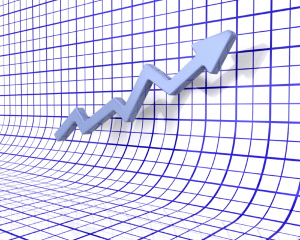- Gross Domestic Growth. The Philippine economy grew by 6.9 percent in the last quarter of 2014, pushing the average full-year growth to 6.1 percent. Growth in the fourth quarter of 2014 appears to be broad-based as all three major productive sectors – the agriculture, industry, and services sectors – have shown positive and robust growth during the period. Most notable is the recovery of the agriculture sector, which significantly grew by 4.8 percent in the fourth quarter of 2014 from the 0.9 percent growth in the same period in 2013. The industry sector grew by 9.2 percent in the fourth quarter, its highest in the last six consecutive quarters since the third quarter of 2013. The services sector also grew by 6.0 percent in the fourth quarter, the same growth for the 2014 full-year average.

- Trade / Exports / Imports. Exports grew by 15.5 percent in real terms in the fourth quarter and a full-year expansion of 12.1 percent relative to the previous quarter’s growth of 9.9 percent. Exports of goods increased by 15.9 percent from 6.2 percent in the fourth quarter of 2013 as positive developments in the global manufacturing sector were seen. The faster growth in exports of services to 14.1 percent from a 6.7-percent decline came mainly from the business process outsourcing or BPO sector.
- Inflation. Year-on-year headline inflation for the whole year of 2014 averaged 4.1 percent, within the Government’s inflation target range of 4.0 percent ± 1.0 percentage point for the year. This was the sixth consecutive year that the average inflation rate has been within the government target. At its meeting last March, the Monetary Board decided to maintain the BSP’s key policy rates at 4.00 percent for the overnight borrowing or reverse repurchase (RRP) facility and 6.00 percent for the overnight lending or repurchase (RP) facility. The Monetary Board’s decision is based on its assessment that the inflation environment continues to be manageable. Latest baseline forecasts indicate that inflation is likely to settle within the lower half of the target range of 3.0 percent ± 1 percentage point for 2015 and 2016.
- Employment. The number of employed Filipinos grew by 2.8 percent to 38.8 million from 37.8 million a year ago, based on the October 2014 round of the Labor Force Survey or LFS. This was accompanied by the decline in the unemployment rate from 6.4 percent to 6.0 percent in the same LFS round.
- Budget. The government’s budget deficit in 2014 was only 0.6 percent of the country’s gross domestic product (GDP), mostly due to underspending. The full year fiscal deficit was lower than both the two percent program and the 1.4 percent deficit-to-GDP ratio recorded in 2014.
| · Foreign Direct Investment / Portfolio Investment. Foreign direct investments (FDI) posted a record high of US$6.2 billion in 2014, increasing by 65.9 percent from the US$3.7 billion net inflows in 2013. FDI inflows remained robust, buoyed by strong investors’ confidence in the country’s solid macroeconomic fundamentals. The Philippine Stock Exchange jumped 23% last year, making it one of the world’s 10-best performing markets. The market has grown 280% since 2008. It has climbed 18.2 percent over the past four months and has broken at least 27 all-time highs this year alone. |
- Currency / Reserves. The Philippine Peso averaged 44.4457 in March 2015, from 44.6044 in January this year, and 44.7916 March 2014. The country’s gross international reserves (GIR) stood at US$80.4 billion as of end-March 2015. This level was lower by US$0.4 billion compared to the end-February 2015 GIR of US$80.8 billion. The GIR level can cover 10.5 months’ worth of imports of goods and payments of services and income. It is also equivalent to 4.9 times the country’s short-term external debt based on original maturity and 3.9 times based on residual maturity.
- Remittances. Cash remittances from Overseas Filipinos coursed through banks rose from US$22,984,035 in 2013 to US$24,348,078 in 2014, an increase of 5.93%. Cash remittances from the UK to the Philippines reached US$1,394,706,000 in 2014, up 5.62% from US$1,320,458,000 in 2013.
- Tourism. The Philippines hosted a total number of 4,833,368 visitors in 2014 (3.25% growth). Of this figure, 133,665 visitors were from the UK (2.77% growth). UK ranks as 10th top market for the Philippines.
If you enjoyed this post, make sure you subscribe to my RSS feed!


Recent Comments